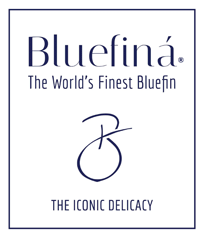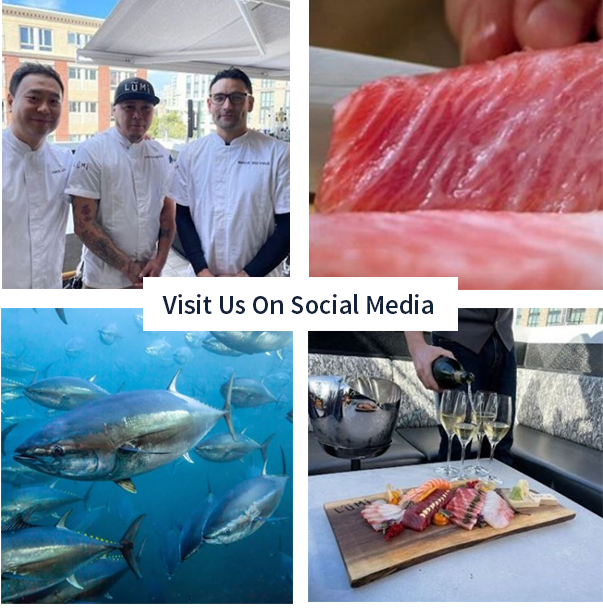Americans are becoming more savvy with premium quality sushi and sashimi. Though when you mention tuna, most americans will think of canned tuna and not premium bluefin tuna. Did you know that in the United States, more than one billion pounds of tuna are consumed each year? Luckily, this statistic only counts canned tuna and not premium quality tuna like bluefin.
Adding in fresh-caught fish boosts the number considerably. Nowadays, premium-grade fish is one of the most popular food items you can find on a menu.
Nowhere is this more clear than in Japanese sushi cuisine, where high-quality fish reign supreme. Cuts like chutoro and otoro especially draw the eye of seafood lovers.
If you’ve been curious about premium-grade sushi fish, read on for some information on the juiciest cut available, otoro.
What is Toro?
If you’ve ever seen a sushi menu in Japanese, you’ve likely seen the words maguro and toro. These culinary terms are simple but vital to the topic of otoro.
Maguro is simply the Japanese word for tuna – bluefin tuna, specifically. This term can sometimes be used for yellowfin tuna as well. Because of this, maguro is generally translated simply to tuna.
Toro, meanwhile, is a specific part of maguro – the belly cut. We’ll delve into the specific types of toro in just a moment, so keep the terms in mind!
Different High-Grade Cuts
When purchasing a steak, you’re greeted with multiple cuts to choose from. Ribeye, sirloin, flank, filet, and many more come from the same cow.
It may not occur to you that the same is true of fish. Where a cut of meat comes from on the fish has drastic effects on its quality, just as with cows.
The two fattiest cuts are otoro and chutoro. Of these two, otoro is the fattiest, generally making it much more desirable, but a great chutoro vs. otoro debate remains. Here are some quick characteristics of the best cuts available.
Chutoro
Beginning with the less fatty, chutoro is found towards the belly cut of the fish. While it’s “less fatty” than otoro, chutoro is otherwise the fattiest cut available on a sashimi-grade tuna.
This cut is considered higher quality than the akami cut – the red tuna cut that most associate with tuna sashimi. With a higher fat content, chutoro has a richer flavor and more tender texture than most of the rest of the fish.
Chutoro is found just between otoro and akami, making it a perfect blend of both. It’s a step above the average cut of maguro, but just barely not the best available cut.
Otoro
The only cut above chutoro, otoro is premium fatty tuna. This small cut is found on the front underside of the fish.
Extremely fatty, this delicacy melts away in your mouth just as a well-marbled steak does. Otoro is also sweet in comparison to the rest of the maguro. Many savor otoro for its strong umami flavor as well.
As the most premium cut, otoro is also generally the most expensive. While the high fatty marbling of the fish is a great reason for this price, scarcity also fuels it.
The average maguro has a very small amount of otoro-quality cut. That means that an entire fish can sometimes be needed for just a single order.
Because of this, locating it can be difficult, as it’s often hard to get in stock. Once it is in stock, otoro usually goes quickly, so make sure to grab it while you have the chance.
How Is It Raised?
At the moment, bluefin tuna is strictly regulated so that they are preserved for generations to come. This means that bluefin fisheries can only catch a fixed number in weight and quantity each year, at a particular time of year, so that bluefin populations can increase back to their numbers in the early 1970s.
Because of this, sustainable methods of raising maguro have become more popular. Bluefin tuna fisheries have taken to raising them in a sustainable farm, multiplying their weight, rather than catching more from the wild.
Research towards farm-raised maguro began in the 1970s when maguro began to skyrocket in popularity. Over the decades, techniques from Kinki University have led to sustainable maguro populations.
Needless to say, this status also lends to the scarcity of maguro. As the years go on, the hope is that this scarcity won’t be a factor anymore!
In the Wild
That said, not all maguro is going to be farm-raised. Sustainable fish farms are expensive and still growing in popularity.
Wild-caught maguro is still popular. There are limits on how many fish can be caught, and which fish can be kept. Tuna that don’t meet certain guidelines are thrown back to keep the population growing.
Most of this fishing is done in the Pacific. As this fish is a Japanese delicacy, much of the fishing is also done close to Japan.
There are different quotas set for wild-caught young, juvenile, and adult bluefin tuna. Regulations are frequently changing to ensure that this fish isn’t overfished to extinction.
How to Eat Otoro
Sushi comes in many forms, and otoro sushi is no exception. With such a delicacy, less usually translates to more. Here are some of the most popular ways to eat otoro.
Sashimi Style
Otoro is rich in flavor and texture, and as such shines best on its own. Most purists will heavily suggest eating the fish raw on its own.
This can be complemented with a simple sauce. You’ll want to make sure that you don’t use anything that can overpower the flavor. A modest soy sauce or a sesame-based togarashi dipping sauce can go a long way.
Sushi Style
More commonly called nigiri, otoro is also frequently eaten as sushi. This simple method involves a slice of the otoro cut over a small mound of sushi rice.
This sushi rice can be seasoned to taste or as close to plain as possible. You’ll want to make sure the rice isn’t so heavily seasoned that you taste it more powerfully than the fish.
Making a Catch
With our goal to provide the freshest and most savory bluefin possible, otoro cannot be understated. With sustainable, preservation-focused policies, you can trust us with the safety and quality of your maguro.
Be sure to contact us with any questions regarding otoro. For more information on our sustainable practices, be sure to check out our informative blog.




